Fish has been a staple ingredient of the Japanese diet for hundreds of years. A myriad of different species of fish are harvested from the surrounding sea in fishing boats, while the rivers and lakes provide freshwater produce for the table. Fishing has long been celebrated in paintings, woodblock prints and also by the netsuke makers who, particularly in the late nineteenth century, followed a fashion for depicting not warriors and aristocrats, but those considered lower down the social scale; men and women who contributed to Japan’s industries.
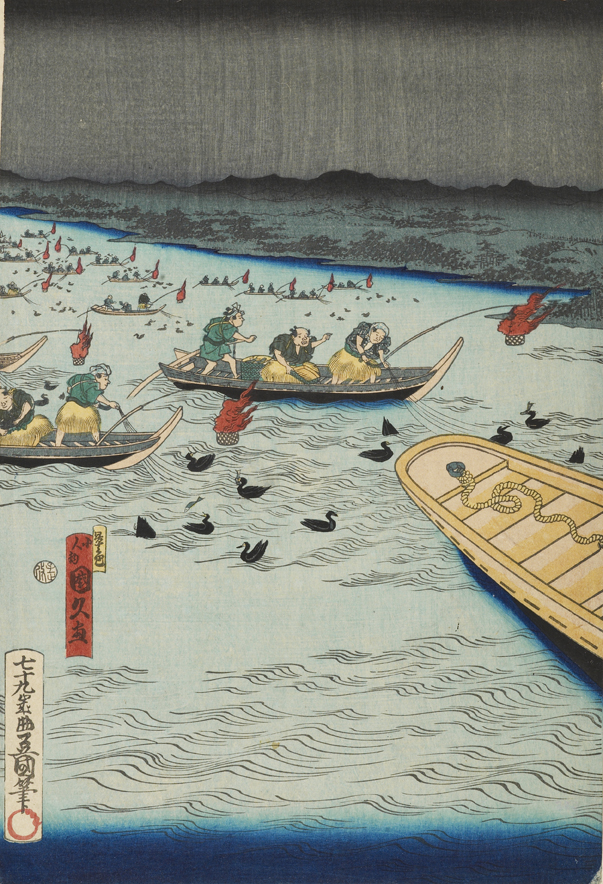
‘Cormorant Fishing at night’, woodblock print, Utagawa Kunihisa II, 1844, EAX.4688 © Ashmolean Museum, University of Oxford
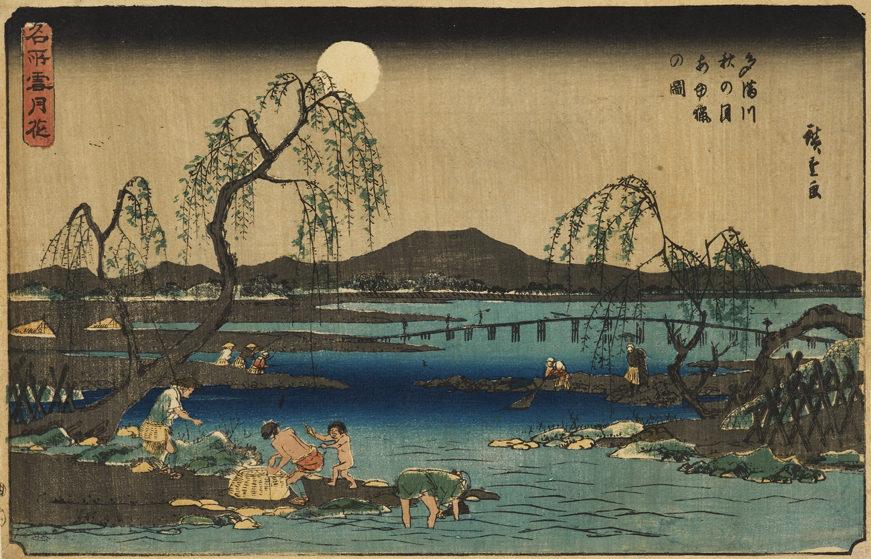
‘Fishing for sweetfish on the Tama River in the autumn moonlight’, woodblock print, Utagawa Hiroshige I (1844-1848), EAX.4750 © Ashmolean Museum, University of Oxford

Netsuke, Kyokusai, wood, late C 19th, height 5.3cm tall, EA1996.20 © Ashmolean Museum, University of Oxford
This late 19th century wood netsuke was carved in Tokyo by Kyokusai, who was famous for his intricate work and realistic facial expressions. This tiny fisherman, prepares his net to sally forth and fill the empty basket at his feet.
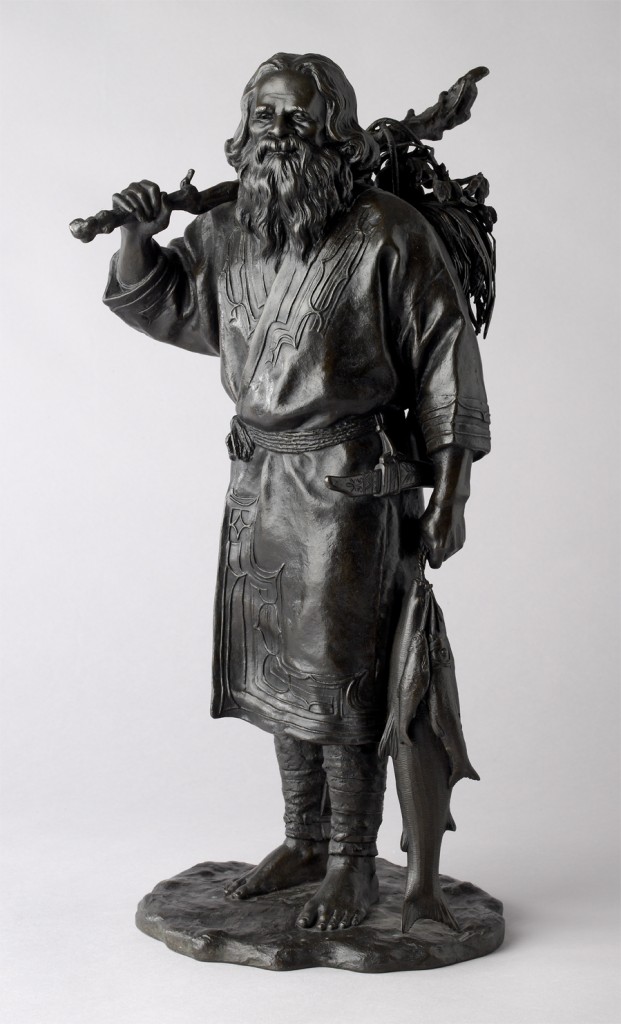
Figure of an Ainu fisherman, Numata Ichiga (Tokyo School), bronze, around 1900, height 48cm, EA2008.8 © Ashmolean Museum, University of Oxford
The fisherman, wearing a coat decorated with traditional Ainu patterns, comes from Hokkaido, the northernmost island of the Japanese archipelago.
Japan has one extraordinary method of gathering fish from the ocean’s floor, which has been practiced for over two millennia. Ama is the name given women who have perfected the technique of plunging down to the bottom of the sea without the use of any diving equipment. Clad only in a loincloth, they are able to hold their breath far longer than most, which enables them to collect abalone and octopus amongst other fish and bring them back in their hands.
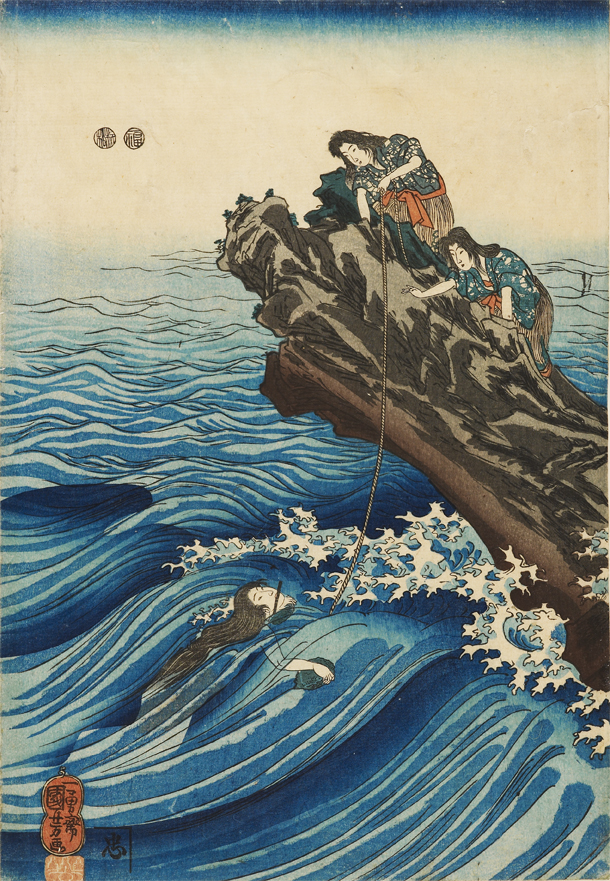
‘Ama clutching an abalone shell’, woodblock print, Utagawa Kuniyoshi (1849-1853), EAX.5292 © Ashmolean Museum, University of Oxford
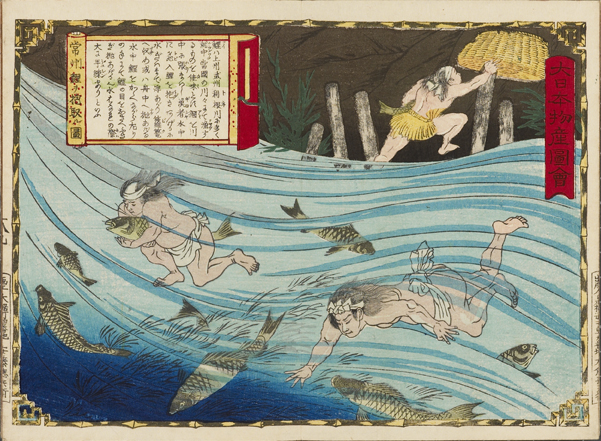
‘Pictures of Products and Industries of Japan – Ama fishing for carp’, woodblock printed book, Utagawa Hiroshige III, 1877, EA1964.224 © Ashmolean Museum, University of Oxford
This jolly fisherman, carved in ivory around 1820, carries a huge abalone shell on his back, maybe one he acquired from an ama. The meat inside the shell is a delicacy, eaten either raw, as sashimi and sushi, or cooked. The shell is prized as decoration on lacquer objects, such as this lacquer box decorated with a hydrangea made for the export market around 1900.
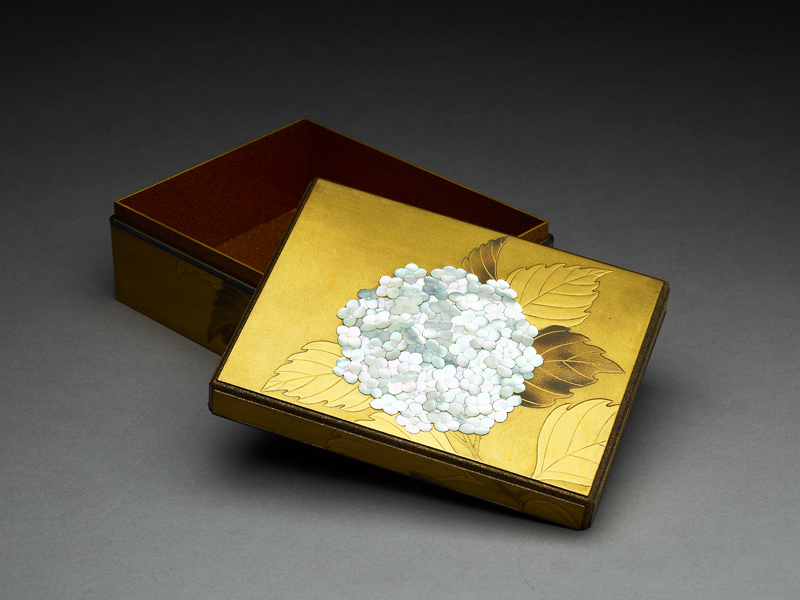
Lacquer box, c. 1900, 15.3 x 12.0 x 5.8 cm, EA1956.3337 © Ashmolean Museum, University of Oxford
Netsuke carvers loved to add a touch of humour to their subjects. This ama is getting more than she bargained for from an amorous octopus!
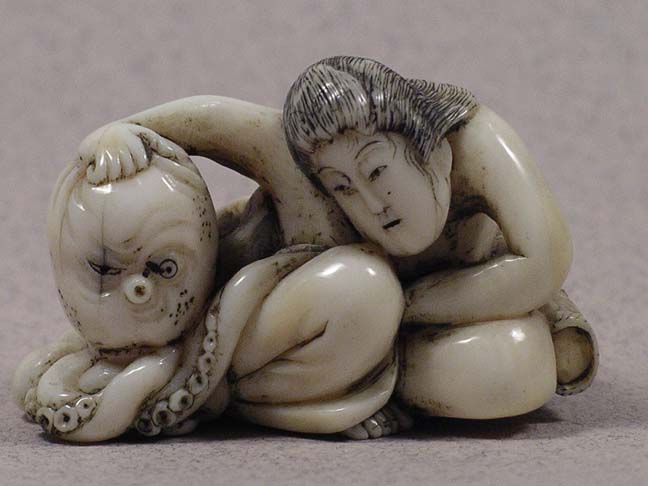
Netsuke, ivory, mid-1800s, 2.0 x 3.3 cm, EA1963.163 © Ashmolean Museum, University of Oxford
However, the octopus was not always friendly; the one depicted here is putting this poor fisherman in serious trouble.

Netsuke, wood, mid-1800s, 3.1 x 3.4 x 2.1 cm, EA1956.3221 © Ashmolean Museum, University of Oxford
Finally, an octopus captured and ready for sale.
Joyce Seaman, Research Assistant, Japanese Art.
